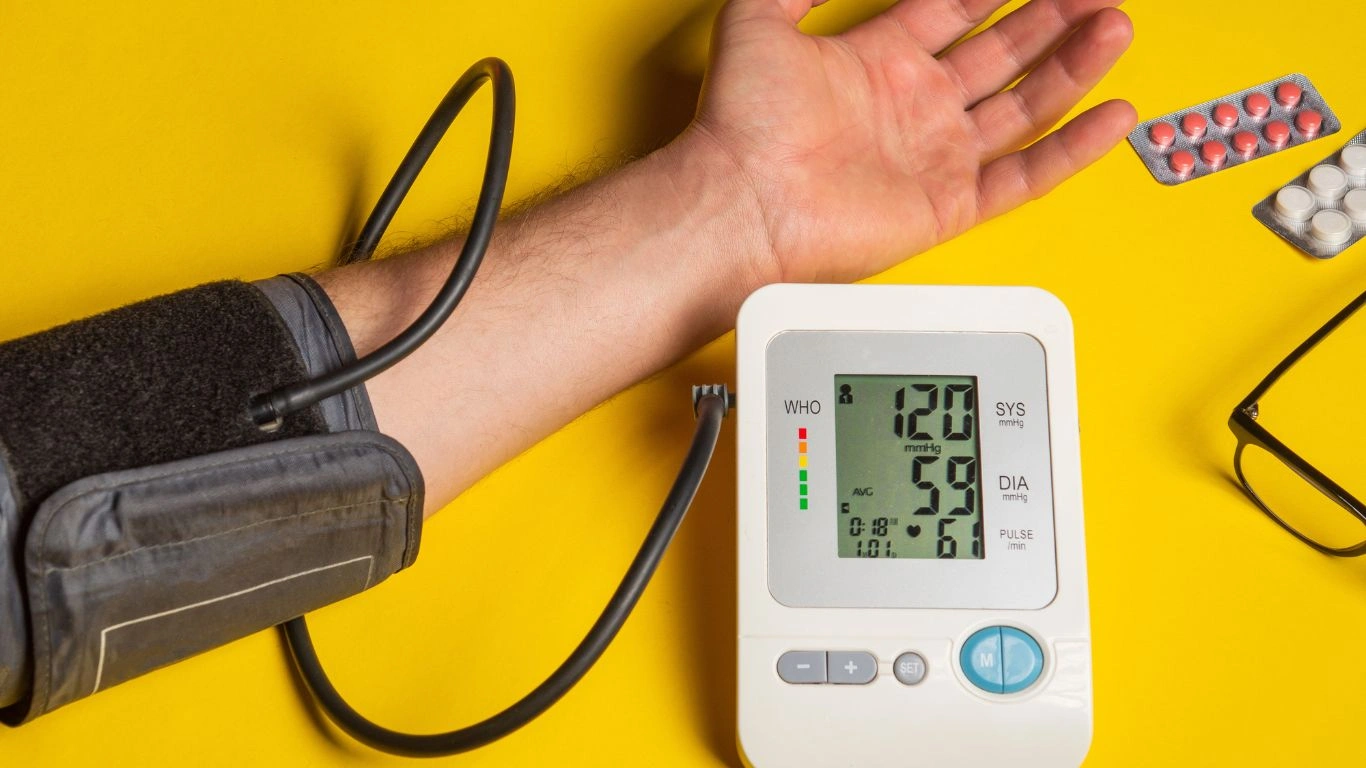7 Powerful Herbs for Lowering Blood Pressure Naturally
High blood pressure—it’s sneaky, persistent, and a major risk factor for heart disease and stroke. But here’s the good news: nature has provided us with incredible remedies that can help keep our numbers in check. If you’re looking for a natural approach, the top herbs for lowering blood pressure naturally can be powerful allies in your journey to better cardiovascular health.
As someone who’s worked extensively with people battling hypertension, I’ve seen firsthand how simple lifestyle changes—including the right herbs—can make a world of difference. And let’s be honest, who doesn’t love the idea of enhancing their meals while also supporting their heart?
🌿 Why Herbs Can Help Manage High Blood Pressure
Many medicinal herbs contain compounds that help relax blood vessels, reduce inflammation, and balance sodium levels—all of which contribute to lower blood pressure. Plus, they often come with added perks like improved digestion, immune support, and stress reduction.
🌱 1. Hawthorn – The Heart’s Best Friend

Hawthorn has been used for centuries in traditional medicine to support cardiovascular health. This powerful herb contains flavonoids and antioxidants that enhance blood circulation, strengthen artery walls, and improve overall heart function.
✔ How It Works
- Acts as a vasodilator, helping blood vessels relax.
- Reduces cholesterol and plaque buildup.
- Helps regulate heart rhythm.
🫖 How to Use
Hawthorn tea is a great way to incorporate this herb into your routine. You can also find it in supplement form or as an extract. I personally love brewing a cup of hawthorn tea in the evening—it’s calming and great for the heart.
🌿 2. Garlic – Nature’s Blood Pressure Medicine

Garlic is more than just a kitchen staple—it’s a powerful natural remedy for high blood pressure. Studies show that garlic contains allicin, a sulfur compound that promotes nitric oxide production, leading to blood vessel relaxation and improved circulation.
✔ How It Works
- Boosts nitric oxide levels for better blood flow.
- Reduces inflammation linked to hypertension.
- Helps lower cholesterol, another heart-health win!
🧄 How to Use
Raw garlic is the most potent, but if you’re like me and prefer a milder taste, roasted or aged garlic supplements work well too. I often add crushed garlic to my morning lemon water—it’s a simple habit with big benefits!
🌿 3. Hibiscus – The Blood Pressure-Lowering Tea
Ever had a cup of bright red hibiscus tea? This tart and refreshing herbal drink isn’t just delicious—it’s also been shown to significantly lower blood pressure, thanks to its high levels of antioxidants and anthocyanins.
✔ How It Works
- Acts as a natural diuretic, helping flush out excess sodium.
- Relaxes blood vessels for smoother circulation.
- Helps lower both systolic and diastolic pressure.
🍵 How to Use
Brew hibiscus tea daily for the best results. I like mine chilled with a squeeze of lemon—it’s a refreshing way to stay hydrated while keeping my blood pressure in check.
🌿 4. Basil – The Flavorful Blood Pressure Ally

Basil isn’t just for pasta and pesto—it’s also a natural blood pressure supporter. This fragrant herb contains eugenol, a compound known to help relax blood vessels and improve circulation. The best part? It’s ridiculously easy to add to meals!
✔ How It Works
- Helps widen blood vessels, reducing pressure.
- Acts as a mild diuretic, flushing excess sodium.
- Contains powerful antioxidants that fight inflammation.
🌱 How to Use
Fresh basil is always my go-to—toss it into salads, soups, or even smoothies. I also love making basil-infused water for a light, refreshing drink. If you prefer supplements, basil extracts are available too.
🌿 5. Celery Seed – A Natural Diuretic

Celery seed might not get as much attention as other herbs, but trust me, it’s a hidden gem. Traditional Chinese medicine has long used celery seed for its diuretic properties, which help remove excess fluid and sodium—key factors in blood pressure control.
✔ How It Works
- Acts as a natural diuretic to reduce fluid buildup.
- Contains phthalides, which relax artery walls.
- Helps regulate stress hormones linked to hypertension.
🥗 How to Use
Celery seed has an earthy, slightly bitter taste, making it great for soups, stews, or even sprinkled on roasted veggies. I like to grind it into a spice mix and use it as a salt alternative—flavor without the sodium spike!
🌿 6. Cinnamon – A Sweet Way to Lower Blood Pressure
Cinnamon isn’t just for holiday treats—this warm, aromatic spice has serious blood pressure benefits. Studies suggest that cinnamon can help lower blood sugar levels, reduce insulin resistance, and improve blood flow.
✔ How It Works
- Encourages blood vessel dilation.
- Helps regulate blood sugar, reducing hypertension risk.
- Loaded with antioxidants that combat oxidative stress.
🍯 How to Use
Adding a dash of cinnamon to your morning coffee, oatmeal, or smoothie is a simple way to get its benefits. I personally love mixing a little cinnamon with honey and warm water—it’s a cozy, heart-friendly drink.
🌿 7. Ginger – The Circulation Booster
If you’ve ever sipped on ginger tea for an upset stomach, you already know how powerful this root can be. But did you know ginger also supports heart health? It improves circulation, reduces inflammation, and helps prevent blood clots.
✔ How It Works
- Relaxes blood vessels, improving blood flow.
- Reduces bad cholesterol (LDL) levels.
- Acts as a natural blood thinner, preventing clotting.
🍵 How to Use
Fresh ginger tea is my personal favorite—just slice some ginger, steep it in hot water, and add a squeeze of lemon. You can also blend fresh ginger into smoothies or use it in stir-fries for a flavorful kick.
🌟 The Power of Herbs in Everyday Life
Incorporating these herbs into your daily routine doesn’t have to be complicated. Small, consistent changes can lead to big improvements in your blood pressure and overall heart health. Plus, they add amazing flavors to your meals—so it’s a win-win!
Of course, while herbs are fantastic natural allies, they work best when combined with other healthy habits. Stay tuned as we dive into more lifestyle strategies to keep blood pressure in check!
📖 Case Studies & Real-Life Examples

Let’s talk about real people who have successfully lowered their blood pressure using herbs and lifestyle changes. Over the years, I’ve worked with many individuals who wanted to manage their hypertension naturally. Here are a couple of inspiring cases:
🌟 Case Study #1: Mark’s Journey with Garlic & Hibiscus Tea
Mark, a 52-year-old teacher, had struggled with borderline hypertension for years. His doctor warned him that if his blood pressure didn’t improve, medication would be the next step. Instead of waiting, Mark started drinking hibiscus tea daily and added fresh garlic to his meals. After three months, his systolic blood pressure dropped by 12 points! His secret? Consistency—he made these herbs part of his daily routine.
🌟 Case Study #2: Sarah’s Success with Basil & Cinnamon
Sarah, a 45-year-old mom of three, had a family history of high blood pressure. She wasn’t keen on medication, so she experimented with diet changes. She started incorporating fresh basil into her meals and swapped sugar for cinnamon in her morning coffee. Within six months, she saw a significant drop in her blood pressure readings, proving that small adjustments can lead to big results.
📝 Key Takeaways: What You Need to Remember
If you’re feeling overwhelmed, don’t worry—let’s break it down. Here are the most important takeaways from everything we’ve covered:
- Herbs like hawthorn, garlic, hibiscus, basil, celery seed, cinnamon, and ginger can naturally lower blood pressure.
- Consistency is key! These herbs work best when used regularly.
- Pair herbal remedies with a balanced diet, exercise, and stress management for maximum benefits.
- Always consult with your doctor before making significant changes, especially if you’re on medication.
❓ FAQs
Q: How long does it take for herbs to lower blood pressure?
A: It varies. Some people notice changes within a few weeks, while others may need a couple of months. The key is to stay consistent and monitor your progress.
Q: Can I take these herbs alongside blood pressure medication?
A: Some herbs can interact with medication, so it’s best to check with your healthcare provider before adding them to your routine.
Q: Is one herb better than the others?
A: Not necessarily! Different herbs work in different ways. Some people respond better to garlic, while others see results with hibiscus tea. Experiment and find what works best for you.
🎁 Bonus: Additional Resources & DIY Tips
If you’re eager to dive deeper, here are some DIY tips to get started:
🍵 DIY Herbal Tea Blend for Blood Pressure
Try this simple tea blend for daily support:
- 1 tsp dried hibiscus petals
- 1 tsp dried hawthorn berries
- 1/2 tsp cinnamon
- 1 cup hot water
Steep for 5–7 minutes, strain, and enjoy!
🥗 Heart-Healthy Herb Mix
Blend the following for a flavorful salt substitute:
- 1 tbsp dried basil
- 1 tbsp celery seed
- 1 tsp garlic powder
- 1 tsp ground cinnamon
Sprinkle on veggies, meats, or soups for added benefits.
📚 Appendix: References & Final Thoughts
For those who love to dig into research, here are some trusted sources:
- National Center for Biotechnology Information (NCBI)
- American Heart Association
- National Center for Complementary and Integrative Health
Final Thoughts: Herbs can be a fantastic way to support heart health, but they work best as part of a holistic lifestyle. Take it one step at a time, be patient, and don’t hesitate to reach out to a healthcare provider for guidance.
Now it’s your turn! Have you tried any of these herbs? What worked best for you? Drop a comment below—I’d love to hear your experiences!

Dr. Gwenna Aazee is a board-certified Internal Medicine Physician with a special focus on hypertension management, chronic disease prevention, and patient education. With years of experience in both clinical practice and medical writing, she’s passionate about turning evidence-based medicine into accessible, actionable advice. Through her work at Healthusias.com, Dr. Aazee empowers readers to take charge of their health with confidence and clarity. Off the clock, she enjoys deep dives into nutrition research, long walks with her rescue pup, and simplifying medical jargon one article at a time.






